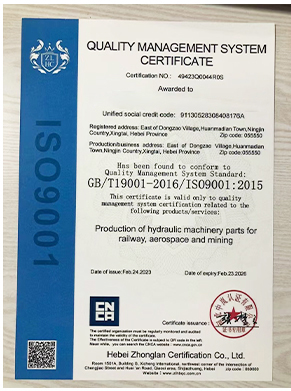- Arabic
- French
- Russian
- Spanish
- Portuguese
- Turkish
- Armenian
- English
- Albanian
- Amharic
- Azerbaijani
- Basque
- Belarusian
- Bengali
- Bosnian
- Bulgarian
- Catalan
- Cebuano
- Corsican
- Croatian
- Czech
- Danish
- Dutch
- Afrikaans
- Esperanto
- Estonian
- Finnish
- Frisian
- Galician
- Georgian
- German
- Greek
- Gujarati
- Haitian Creole
- hausa
- hawaiian
- Hebrew
- Hindi
- Miao
- Hungarian
- Icelandic
- igbo
- Indonesian
- irish
- Italian
- Japanese
- Javanese
- Kannada
- kazakh
- Khmer
- Rwandese
- Korean
- Kurdish
- Kyrgyz
- Lao
- Latin
- Latvian
- Lithuanian
- Luxembourgish
- Macedonian
- Malgashi
- Malay
- Malayalam
- Maltese
- Maori
- Marathi
- Mongolian
- Myanmar
- Nepali
- Norwegian
- Norwegian
- Occitan
- Pashto
- Persian
- Polish
- Punjabi
- Romanian
- Samoan
- Scottish Gaelic
- Serbian
- Sesotho
- Shona
- Sindhi
- Sinhala
- Slovak
- Slovenian
- Somali
- Sundanese
- Swahili
- Swedish
- Tagalog
- Tajik
- Tamil
- Tatar
- Telugu
- Thai
- Turkmen
- Ukrainian
- Urdu
- Uighur
- Uzbek
- Vietnamese
- Welsh
- Bantu
- Yiddish
- Yoruba
- Zulu
Jul . 31, 2024 21:15 Back to list
Exploring the Benefits and Innovations of Eco-Friendly Drive Belts for Sustainable Transportation Solutions
Understanding Eco Drive Belts and Their Significance
In a world increasingly focused on sustainability and eco-friendliness, innovations that reduce waste and improve efficiency are gaining prominence. One such advancement is the eco drive belt, a vital component in many mechanical systems that seeks to balance functionality with ecological responsibility. This article delves into what eco drive belts are, their significance in various applications, and their overall impact on sustainability.
What is an Eco Drive Belt?
An eco drive belt is a type of drive belt that is designed to optimize the performance of machinery, while minimizing the environmental footprint. Typically made from high-quality, durable materials, these belts are engineered to reduce friction and energy loss, providing a more efficient means of power transmission within machines. This efficiency not only enhances the performance of the equipment but also contributes to reduced energy consumption, leading to a lower carbon footprint.
The Mechanics of Eco Drive Belts
Drive belts, in general, serve the purpose of transferring motion from one component of a machine to another. They are integral to the functioning of various devices, from vehicles to industrial machinery. Traditional drive belts can often be less efficient, leading to unnecessary energy loss through heat and friction. Eco drive belts, on the other hand, utilize advanced materials and design technologies that significantly enhance their efficiency. The result is not just a boost in performance but also a substantial reduction in wear and tear, leading to longer lifespans for both the belts and the machinery they operate.
Applications of Eco Drive Belts
eco drive belt

Eco drive belts are used in an array of applications across different industries. In the automotive sector, for example, these belts can be found in hybrid and electric vehicles where energy efficiency is paramount. Their application extends to agricultural machinery, where reduced fuel consumption can have a direct impact on the cost-effectiveness and sustainability of farming practices.
Similarly, in industrial settings, eco drive belts contribute to the creation of green manufacturing processes. By improving the efficiency of conveyor systems and other machinery, they help companies reduce their energy use and operational costs while adhering to increasingly stringent environmental regulations. This makes eco drive belts not just a smart financial choice but also a strategic one for businesses aiming to enhance their sustainability profiles.
Environmental Impact
The environmental benefits of using eco drive belts are substantial. By enhancing energy efficiency, they contribute to lower greenhouse gas emissions. Additionally, the durability and longevity of these belts mean less frequent replacements are necessary, which further reduces waste. In a circular economy where resource recovery is key, using long-lasting components is a significant advantage.
Furthermore, the materials used in manufacturing eco drive belts are often sourced and produced with environmental sustainability in mind. Manufacturers are increasingly using recycled materials and eco-friendly processes, aligning product development with the principles of sustainability.
Conclusion
In summary, eco drive belts embody a crucial intersection of technology and sustainability. They enhance machine efficiency while minimizing environmental impacts, making them an integral part of modern mechanical systems across various industries. As the world continues to grapple with challenges related to energy consumption and climate change, innovations like eco drive belts not only pave the way for greener solutions but also demonstrate how mechanical advancements can harmoniously coexist with ecological responsibilities. Investing in eco drive belts represents a step toward a more sustainable future, where efficiency and environmental stewardship go hand in hand.
-
Upgrade Power Steering Pump Belt for Smooth, Quiet Operation
NewsAug.27,2025
-
Precision Timing Belt & Chain: Engine Performance & Durability
NewsAug.26,2025
-
Precision Lathe Drive Belts: Durable & Reliable Performance
NewsAug.25,2025
-
84.5 Serpentine Belt: Durable & Precision Fit for Your Engine
NewsAug.24,2025
-
Premium Ribbed Drive Belts for Quiet Power Transmission
NewsAug.23,2025
-
High-Performance Vehicle Timing Belt for Engine Precision
NewsAug.22,2025

